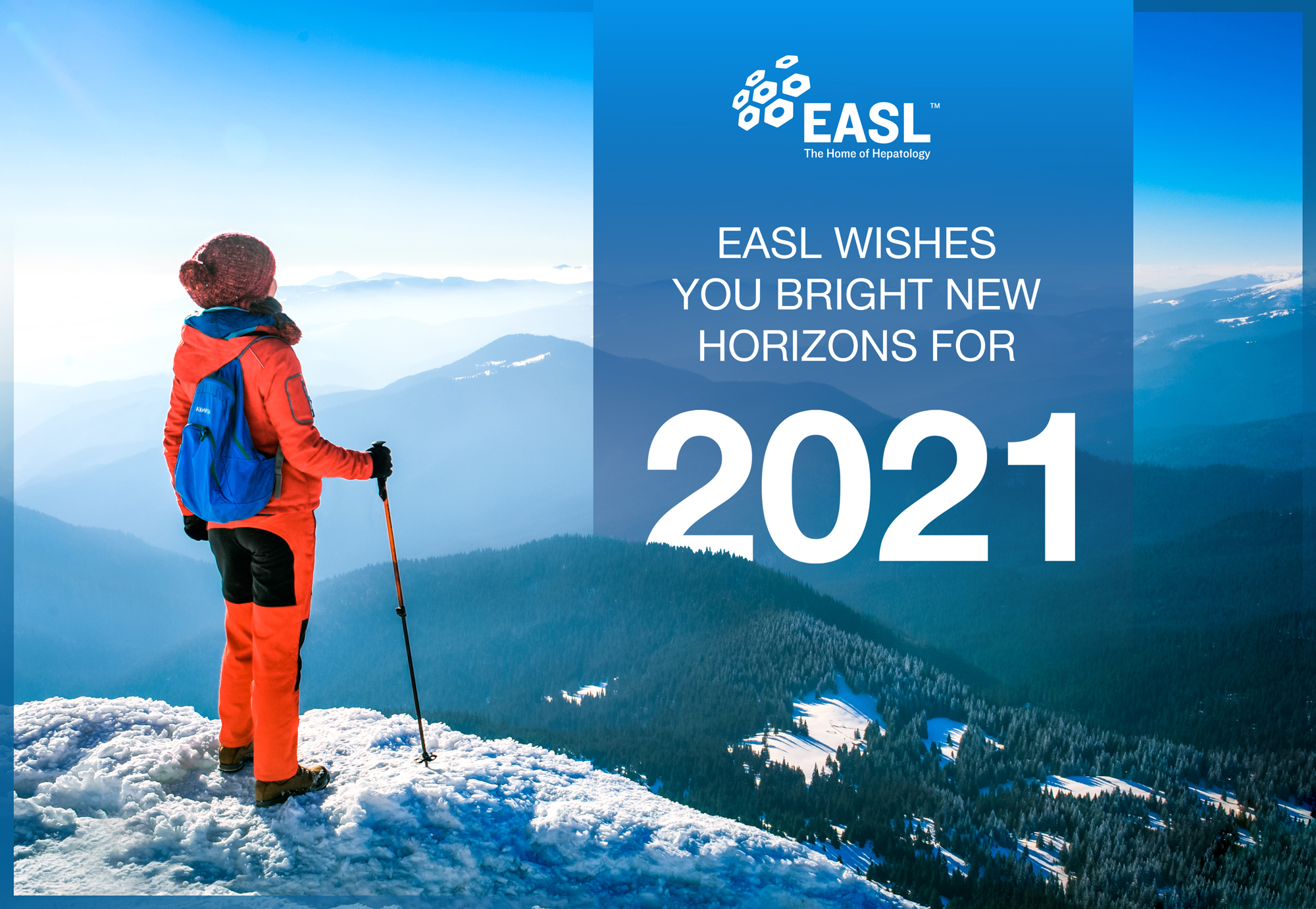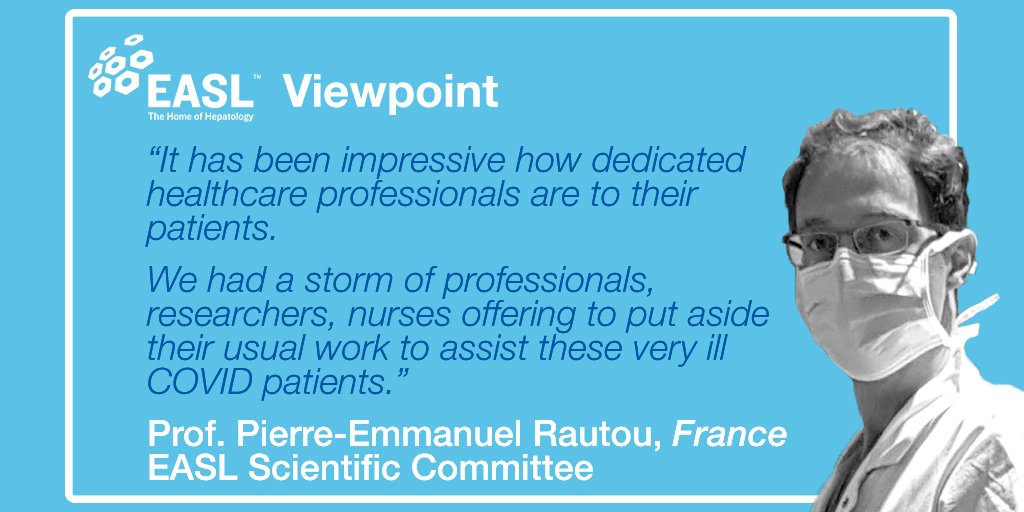Looking towards bright horizons for 2021

This year has been unlike any other. COVID-19 brought unimaginable challenges to the medical community, placing you at the forefront of the pandemic. The year 2020 posed unique questions to those of us treating liver patients and focusing on liver diseases. A giant in hepatology, Prof. Roger Williams, tragically passed away leaving behind an incredible legacy just months before hepatology gained unprecedented international recognition by the award of a 2020 Nobel Prize for work on hepatitis C.
EASL has been pushed to new limits, but with your continued support, we have weathered this difficult year. It was a year of firsts, with many of our face-to-face meetings switching to a digital experience, including Digital ILC 2020.
We’re looking forward to brighter horizons that 2021 brings, together with you.
Top 3 EASL 2020 highlights
Tackling the puzzle of COVID-19 and the liver
Just a year ago, we had barely heard about COVID-19. EASL immediately engaged in global efforts to collect data on COVID-19 and the liver, joining forces with our peers to set up the COVID-Hep Registry, to write and publish the EASL-ESCMID Position Papers, and to foster research on how liver transplantation is affected worldwide.
Launching our first fully online events
After 54 years of face-to-face meetings, we organised our first-ever entirely online congress, the Digital International Liver Congress™ 2020 – interactive, with unprecedented global reach. We enjoyed vibrant participation, hosting 7,389 registered delegates from 114 countries! We also had two successful online General Assemblies.
The rising prestige of our journals
We were awarded the highest ever impact factor of 20.852 for the Journal of Hepatology, confirming its status as a top-tier journal. JHEP Reports was recently accepted for indexing by Scopus, the largest abstract and citation database of peer-reviewed literature. This is a testament to the quality of the journal. This milestone will further contribute to increasing the visibility of the journal and its authors.
Looking towards 2021
Bright new digital horizons
EASL rose to the challenge of our first-ever fully digital meeting. In 2021, we will raise the bar higher still, bringing you cutting-edge content and extensive interactivity throughout. We have two fully digital events planned: in February, we’re holding the Digital Liver Cancer Summit and, in June, the International Liver Congress™. Your participation at these events, convening the global hepatology community, is crucial.
Boosting online education
We are taking EASL Campus to new heights, putting all our content from previous events up for on-demand access and developing more new resources such as webinars, podcasts, and quizzes. Following the successful EASL Digital ILC Takeaways, we will launch a new series after Digital Liver Cancer Summit and ILC 2021. Furthermore, the first module of the EASL-ESPEN eLearning course on nutrition will be released in 2021.
Promoting policy and public health
The first results of Hepahealth II, a mathematical modelling study quantifying the future epidemiological and economic burden of liver disease and the impact of public interventions to reduce liver disease in Europe, are expected over the next 12 months. Further strengthening relationships with patient organisations will also be a priority area for EASL in 2021, starting with a dedicated Patient Forum during Digital Liver Cancer Summit.
Realising our gender and inclusion policy
We are making progress in implementing EASL’s equality, diversity, and inclusion policy, making the goal a reality. The Young Investigator Task Force is now made up of an equal number of women and men. At all EASL events, we are striving for increased diversity in speakers, both in gender and in country of origin.


